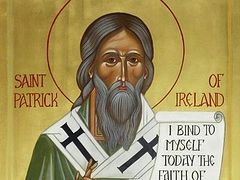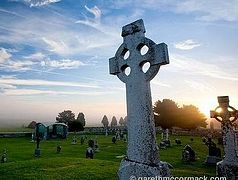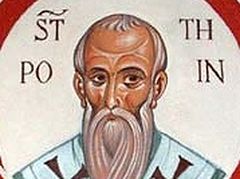Moscow, May 15, 2018
 St. Gall (left, photo: johnsanidopoulos.com), St. Columban (center, photo: catholic.org), St. Fridolin (right, photo: catholicsaints.info)
St. Gall (left, photo: johnsanidopoulos.com), St. Columban (center, photo: catholic.org), St. Fridolin (right, photo: catholicsaints.info) The Holy Synod of the Russian Orthodox Church has formally resolved to officially include two ancient Georgian and three ancient Western saints into its liturgical calendar, reports the Russian Church’s official website.
The decision was taken after hearing a report from His Eminence Metropolitan Clement of Kaluga and Borovsk, chairman of the commission for the compilation of the Russian Orthodox Church’s Menaion, or calendar of saints, with the proposal to include two ancient Georgian saints and three ancient saints who labored in Western lands before the Great Schism of 1054.
The commission, created on September 18, 2014 by the blessing of His Holiness Patriarch Kirill, has been working on compiling a list of Western saints guided by the following criteria: their unblemished confession of the Orthodox faith; the circumstances in which their glorification took place; the absence of their names from polemical works against the Eastern Church and rite; and their present veneration in foreign dioceses of the Russian Orthodox Church and other Local Churches.
Also considered in the process were the Complete Menaion of the East by Archbishop Sergius (Spassky), the report of St. John Maximovitch to the Holy Synod of the Russian Church Abroad in 1952, the articles of the Orthodox Encyclopedia and the Snaxarion compiled by Hiermonk Macarius of the Athonite monastery of Simenopetra.
In March of last year, the Synod added St. Patrick of Ireland, St. Alban of Britain, St. Genevieve of Paris, St. Vincent of Lerins, and 11 other Western saints to the calendar.
The Georgian saints added into the calendar of the Russian Orthodox Church are:
Equal-to-the-Apostles King Mirian the Iberian (Oct. 1/14, † after 361),
Equal-to-the-Apostles Queen Nana the Iberian (Oct. 1/14, † approx. 364).
The Western saints added into the calendar of the Russian Orthodox Church are:
St. Gall, monk of Bangor Monastery and enlightener of Switzerland (Oct. 16/29, † 650),
St. Columban, abbot of Luxeuil Abbey (Nov. 23/Dec. 6, † 615),
St. Fridolin of Säckingen, enlightener of the Upper Rhine (March 6/19, † 540).
The Russian Church also added 9 Romanian saints to its calendar in March, and the Romanian Church added St. Matrona of Moscow to its calendar in February.
Follow us on Facebook!



